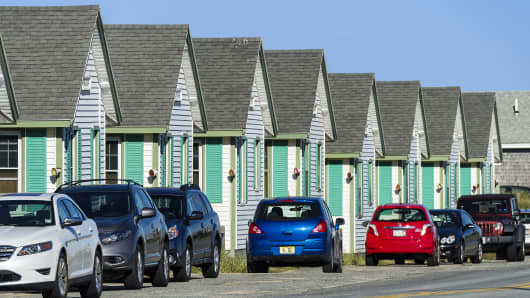Size matters, especially in housing, but preferences can change quickly, and that is the case today. Small is happening in a big way.
For the first time since the recession, home size is shrinking. Median single-family square floor area fell from the first to the second quarter of this year by 73 feet, according to the National Association of Home Builders (NAHB) and U.S. Census data. That may not sound like a lot, but it is a clear reversal in the trend of builders focusing on the higher-end buyer.
An increase in home size post-recession is normal, historically, as credit tightens and more wealthy buyers with more cash and better credit, rule the market. As with everything else in this unique housing cycle, however, the trend this time is more profound.
“This pattern was exacerbated during the current business cycle due to market weakness among first-time homebuyers,” wrote Robert Dietz, NAHB’s chief economist. “But the recent small declines in size indicate that this part of the cycle has ended and size should trend lower as builders add more entry-level homes into inventory.”
Sales of newly built homes jumped more than 12 percent in July compared to June, according to the Census, and the biggest increase was in homes priced in the mid to just below midrange. The median price of a new home sold in July fell 1 percent compared to July a year ago. Again, not a huge drop, but a reversal from the recent gains in new home prices.
“The majority of it is a question of affordability,” said Bob Youngentob, president of Maryland-based EYA, a builder concentrating largely in urban townhomes. “People want to stay in closer-in locations, at least from our experience, and closer-in locations tend to be more expensive from a land and development standpoint and so, the desire to be able to keep people in those locations is translating into smaller square footages and more efficient designs.”
Financing is also playing a big role in home size, even out in the suburbs. Mortgage underwriting, especially for government-insured loans, is still tight and the bigger the loan size, the tougher it is to qualify.
“At 3 to 3.5 percent mortgage interest rates, you’d think they would be very affordable, but all of the financial requirements for higher FICO scores and larger down payments and all those other things and income ratios have made it harder, even with a low interest rate,” said Stephen Paul, executive vice president of homebuilding operations at Mid-Atlantic Builders, also in Maryland. “In our market it’s been financing is driving the deals and builders are adjusting their product to meet the affordability issue.”
Even luxury homebuilder Toll Brothers, which beat expectations in its fiscal third-quarter earnings, saw a drop in its average price of net signed contracts. This may be a reflection of more smaller homes selling. With the improving employment market, builders in general are finally seeing more demand for entry-level product. Both Lennar andD.R. Horton are the first of the big public builders to shift focus back to that lower-priced, smaller home.
Paul said he has not seen the return of the first-time buyer yet in his larger homes built further outside the Washington, D.C., area. He is seeing some at smaller townhomes, closer in to the city, but not as many as he would like.
“If you look at what rentals are doing today and the accoutrements that these apartments are putting in, they are making them resortlike. It’s not a surprise that millennials might not want to leave the comforts of a rental apartment because they can’t replicate that in a home,” said Paul.
Preference also plays a role, as younger Americans seem to be drawn to smaller, simpler living. The tiny house trend has been growing exponentially, as technology allows people to trick out small spaces with big amenities.
Micro-apartments are also seeing big demand. And millennials, too, are far more cautious with their finances, having grown up in one of the worst financial crises in history. They don’t seem to crave size as much as they do a smart, high-functioning, environmentally friendly home. In other words, bigger isn’t necessarily better.
source”gsmarena”




